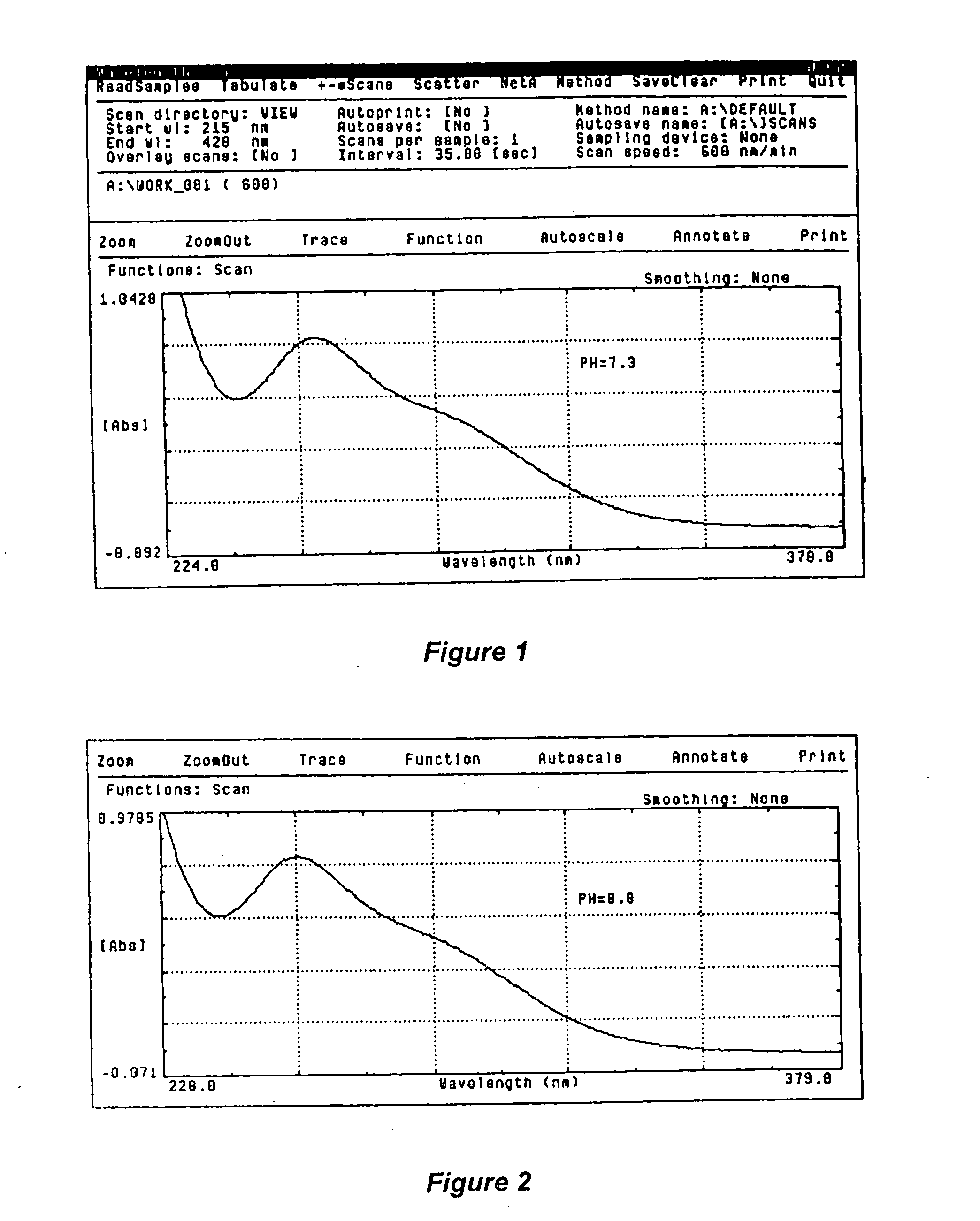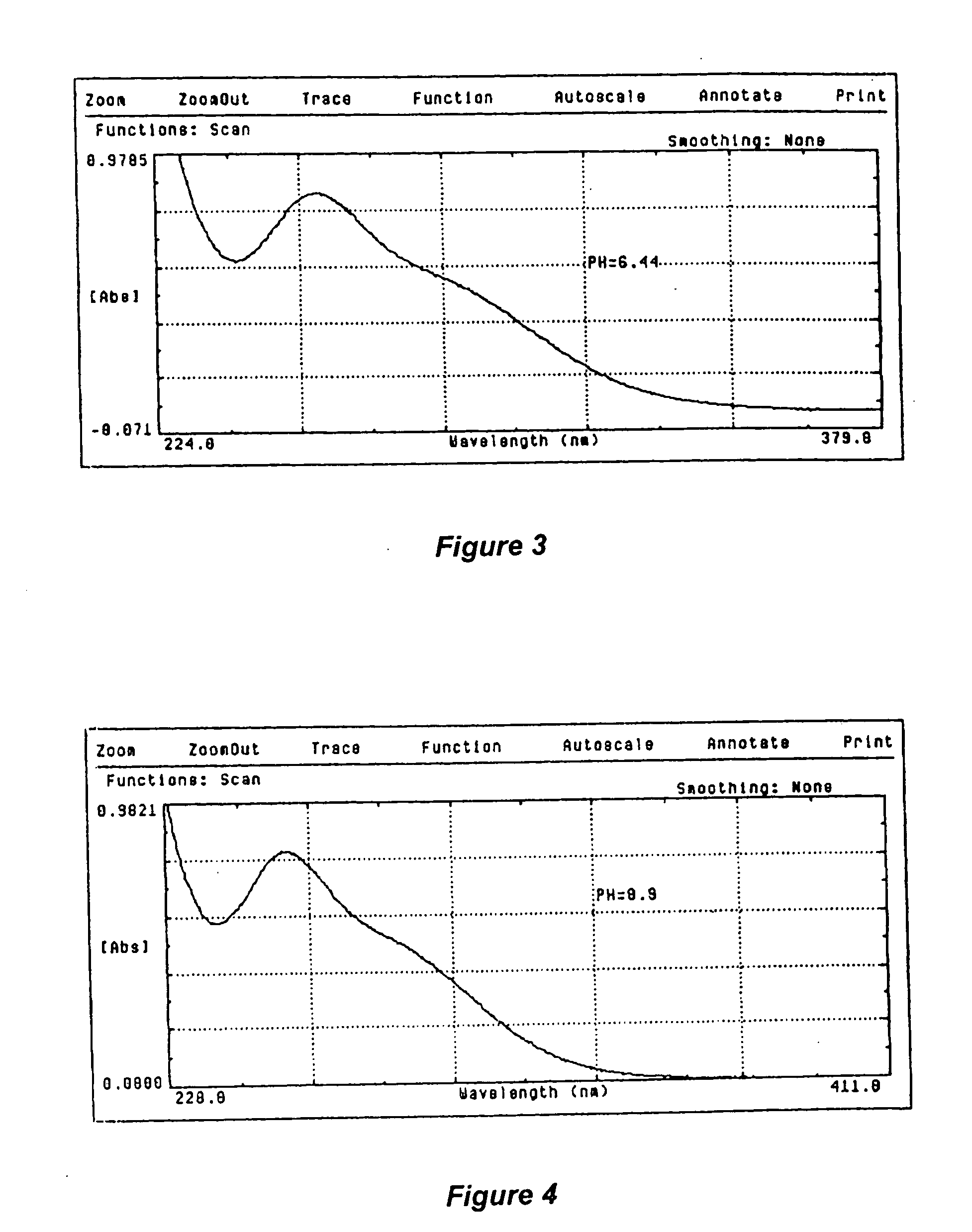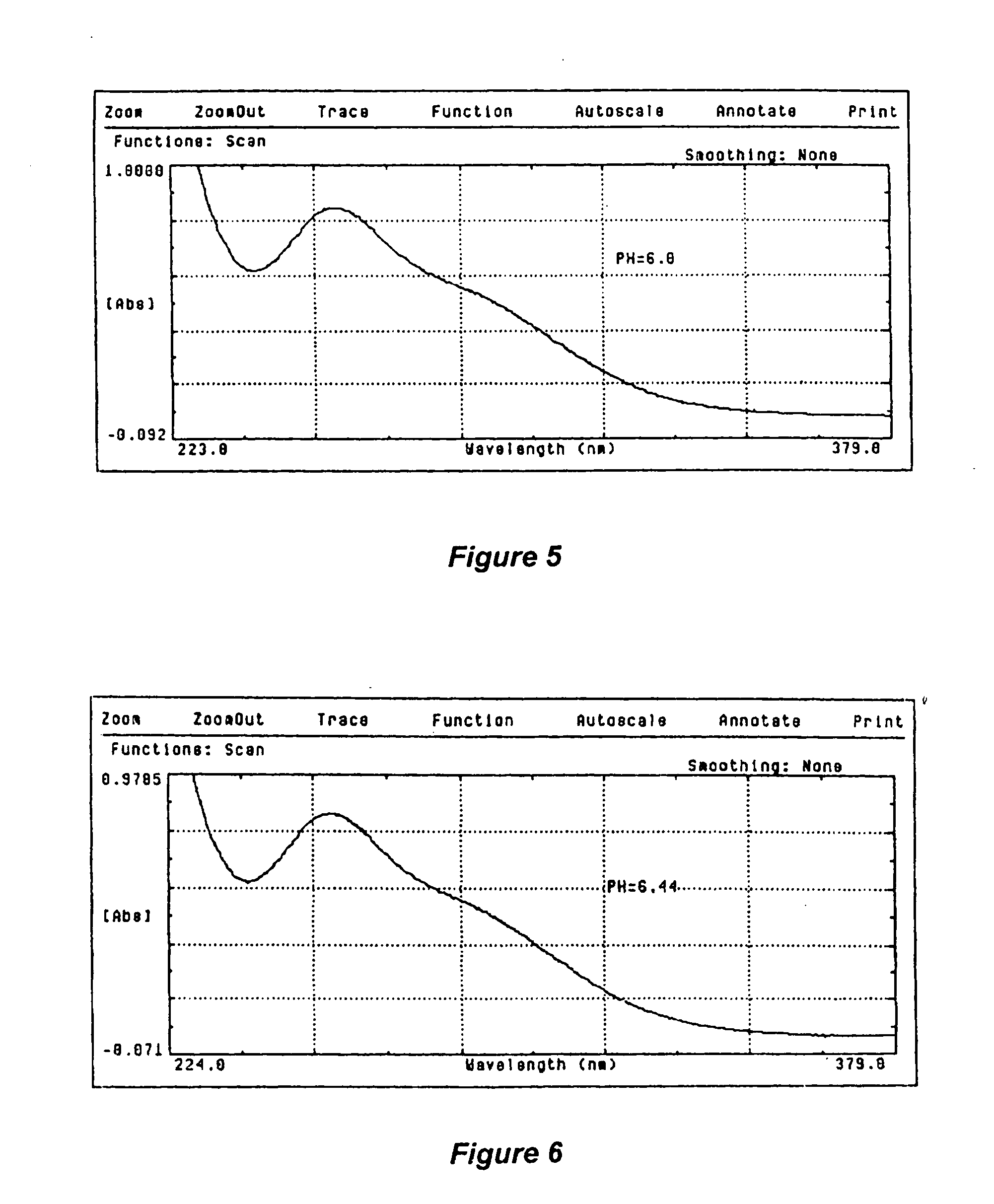Synergistic antimicrobial ophthalmic and dermatologic preparations containing chlorite and hydrogen peroxide
a technology of hydrogen peroxide and ophthalmic preparations, which is applied in the field of synergistic antimicrobial ophthalmic and dermatologic preparations containing chlorite and hydrogen peroxide, disinfectant/antimicrobial preparations, etc., can solve the problems of inability to dispense pure chlorine dioxide for topical use, high explosive and poisonous concentration of chlorine dioxide in liquid or gaseous state, and scarring prevention or minimization, and broad antimicrobial activity
- Summary
- Abstract
- Description
- Claims
- Application Information
AI Technical Summary
Benefits of technology
Problems solved by technology
Method used
Image
Examples
experiment 1
[0089] pH Level of 7.3
[0090] Experiment: Fill the first cuvette with the placebo solution, wipe it clean, and place the cuvette in the standard beam path of the spectrophotometer. Fill the second cuvette with the liquid sodium chlorite / hydrogen peroxide solution, wipe it clean and place the cuvette in the sample beam path of the spectrophotometer. Scan the solutions from 200 nm to 400 nm and record the results. Plot and printout the results, as illustrated in the graph shown in FIG. 1.
[0091] Result: The liquid solution contained sodium chlorite and hydrogen peroxide as active ingredients, as well as buffering and tonicity agents at the pH level of 7.3. The placebo solution contained hydrogen peroxide as active ingredient, as well as buffering and tonicity agents at the pH level of 7.3.
[0092] Hydrogen peroxide does not absorb in the 200 nm to 400 nm range. Therefore, as seen in FIG. 1, absorption peaks for hydrogen peroxide were not detected.
[0093] Sodium chlorite has an absorpti...
experiment 2
[0097] pH Level of 8.0
[0098] Experiment: Dispense 25 mL. of the placebo solution and 25 mL. of the liquid sodium chlorite / hydrogen peroxide solution into 2 clean containers. Add 0.1 Normal sodium hydroxide solution to each container so as to adjust the pH of both the placebo solution as well as the liquid solution to a pH level of 8.0.
[0099] Fill one of the cuvette with the placebo solution, wipe it clean, and place the cuvette in the standard beam path of the spectrophotometer. Fill the second cuvette with the liquid sodium chlorite / hydrogen peroxide solution, wipe it clean and place the cuvette in the sample beam path of the spectrophotometer. Scan the solutions from 200 nm to 400 nm and record the results. Plot and printout the results, as illustrated in the graph shown in FIG. 2.
[0100] Result: The liquid sodium chlorite / hydrogen peroxide solution contained sodium chlorite and hydrogen peroxide as active ingredients, as well as buffering and tonicity agents at the pH level of ...
experiment 3
[0104] pH Level of 8.8
[0105] Dispense 25 mL. of the placebo solution and 25 mL. of the liquid sodium chlorite / hydrogen peroxide solution into 2 clean containers. Add 0.1 Normal sodium hydroxide solution to each container so as to adjust the pH of both the placebo solution as well as the liquid solution to a pH level of 8.8.
[0106] Fill one of the cuvette with the placebo solution, wipe it clean, and place the cuvette in the standard beam path of the spectrophotometer. Fill the second cuvette with the liquid sodium chlorite / hydrogen peroxide solution, wipe it clean and place the cuvette in the sample beam path of the spectrophotometer. Scan the solutions from 200 nm to 400 nm and record the results. Plot and printout the results, as illustrated in the graph shown in FIG. 3.
[0107] Result: The liquid sodium chlorite / hydrogen peroxide solution contained sodium chlorite and hydrogen peroxide as active ingredients, as well as buffering and tonicity agents at the pH level of 8.8. The pla...
PUM
| Property | Measurement | Unit |
|---|---|---|
| Fraction | aaaaa | aaaaa |
| Percent by mass | aaaaa | aaaaa |
| Percent by mass | aaaaa | aaaaa |
Abstract
Description
Claims
Application Information
 Login to View More
Login to View More - Generate Ideas
- Intellectual Property
- Life Sciences
- Materials
- Tech Scout
- Unparalleled Data Quality
- Higher Quality Content
- 60% Fewer Hallucinations
Browse by: Latest US Patents, China's latest patents, Technical Efficacy Thesaurus, Application Domain, Technology Topic, Popular Technical Reports.
© 2025 PatSnap. All rights reserved.Legal|Privacy policy|Modern Slavery Act Transparency Statement|Sitemap|About US| Contact US: help@patsnap.com



